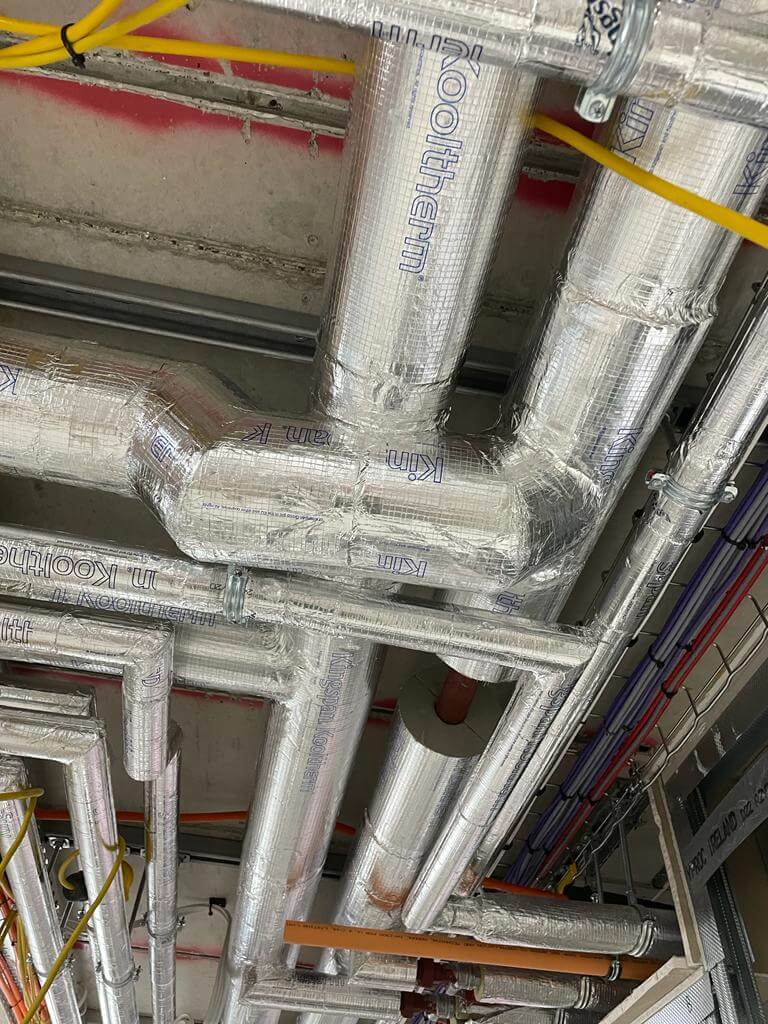CP1 – What you need to know
With over 17,000 heat networks within the UK, meeting around 2% of the total heating supply, heat networks are playing a significant role in providing efficient heating and hot water to many. The UK Government has set a target that 10% of the country’s heating needs will be served by this technology by 2030. Learn more about the significance of this approach and what the recently updated CIBSE CP1 Code of Practice means for you.
What are heat networks?
Heat networks use a single source, also known as an energy centre, to provide heating and hot water to multiple customers through insulated pipework. The scale of these networks can vary from supporting buildings, referred to as communal heating; through to larger urban areas, labelled district heating.
What are their benefits?
Simply put, heat networks provide an economy of scale avoiding the need to fit individual boilers in each property. They are a practical alternative to low-carbon heating systems where these are impractical to setup.
Additionally heat networks are “fuel agnostic”. This allows the energy centre to take advantage of low carbon options which may exist in the local area. These could vary from heat and power plants powered by waste through to large heat pumps, and more besides.
The CIBSE CP1 Code of Practice – what is it?
First published in 2015, the code aims to outline best practice and set out a minimum set of standards when implementing a heat network. This is to ensure performance targets are met and customers realise their benefits. The standard applies to both new and existing heat networks.
Why you should be interested in CP1
As a relatively new technology, it was revised and republished in January 2021. The revision incorporated feedback from the industry as well as more recent research.
- Firstly, it is designed to support both the customer and contractor. It focuses on achieving the outcomes that both parties are looking for – a successful heat network implementation
- In a more compliance aware industry, the updated specification includes checklists, evidence packs and performance measuring guidance. This provides a clear audit trail and supports tracing any issues that may arise.
- More detailed guidance on how to size systems correctly when designing. Whilst the temptation may be to ‘oversize’ systems this can cause considerable waste in contradiction to the efficiency benefits of the system. The updated CP1 facilitates correct sized
- With over 500 minimum requirements, CP1 provides a comprehensive guide to the design, installation, operation and maintenance.
CIBSE’s guide to the Ten big changes in CP1 Heat Network Code of Practice provides a further information on recent changes. https://www.cibsejournal.com/technical/ten-big-changes-in-cp1-heat-network-code-of-practice/
Whilst the CIBSE CP1 (2020) is a voluntary document, it does provide excellent guidance and best practice for installing and maintaining heat networks which makes it crucial for any project involving this technology. It is worth bearing in mind that the Department for Business, Energy and Industrial Strategy (BEIS) has suggested that they may turn this into legislation in the near future.
Heat Networks – Pipe and Thermal Insulation
The code takes a straightforward approach to outlining minimum insulation thicknesses for both phenolic insulation and mineral fibre insulation. It advises a minimum thickness of 50 mm pipe insulation for both phenolic and mineral fibre. However, the specific system performance targets will need to be taken into account and may mean that in some cases the minimum thickness will need to be increased. CP1 accounts for this by ensuring these considerations are part of the design process.
It is very likely that CP1 will be adopted as the standard for many new residential developments. Particularly, given the Governments’ stated intention to make this a legal requirement in the near future.
Your Heat Network insulation partner
This is an exciting and growing technology, which will contribute to carbon reduction and a net zero carbon society, as well as provide efficient and economic heating and hot water solutions for the UK. With experience in delivering heat network projects, OJM Insulations would be happy to discuss your needs further and answer any questions you may have.
Call us now on 01245 425511 or contact us via our enquiry form

